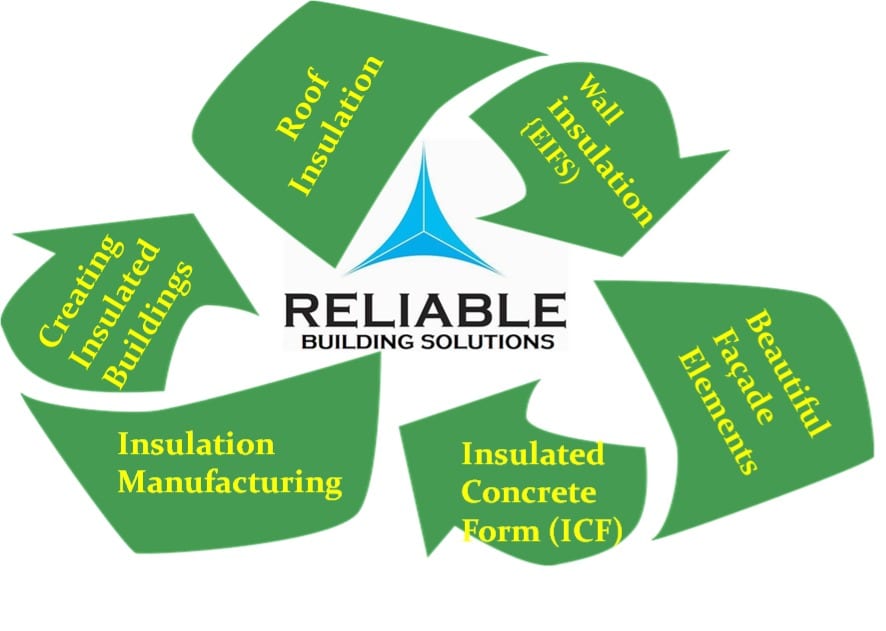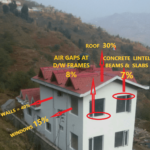Besides warming up the earth’s surface temperature, Global warming impacts us in deeper and more sinister ways like glacier and snowcap melting resulting in rising sea levels, changing weather patterns, crop failures, floods, cyclones, and other “natural” disasters which are man-made because the fundamental cause for this unpredictable weather pattern is man-made ‘global warming”.
Let’s try and understand, at a micro-level, how we are participating in the global warming process through our actions and decisions, quite possibly unknowingly. An inflated power bill may not be pinching the pockets of a top executive living in the penthouse of a concrete multi-story apartment with a large proportion of glass-covered exteriors. To counter the substantial heat load due to excessive glass and highly conductive concrete walls & roof, his family may be running oversized air conditioners and therefore consuming up to 4 times the normal amount of electricity. However, thrice the power consumed has to be generated at the powerhouse (to account for generation efficiency and distribution losses), which will burn up to 12 times the fossil fuel (75% of the power generated in India uses fossil fuel) and thus add 12 times the Greenhouse gases to the atmosphere. That is not the end, the hot air thrown by the condenser of the air conditioner adds to the rising temperature and the hot concrete roof increases the ambient temperature further through the “heat island effect”. This becomes a vicious circle, depicted by the flowchart below.
Nobody can deny that we human beings live in a connected world. We breathe the same air and live in the same environment. While we may not immediately realize the impact of our actions on Mother Earth (environment/nature), the result of our collective actions can be easily seen in terms of the incessant upward march of 5 years running mean surface temperature of the earth. This is “Global Warming”, with far-reaching consequences on the world we live in. Global warming is the unusually rapid increase in Earth’s average surface temperature over the past century, primarily due to the greenhouse gases released as people burn fossil fuels. The global average surface temperature rose 0.6 to 0.9 degrees Celsius (1.1 to 1.6° F) between 1906 and 2005, and the rate of temperature increase has nearly doubled in the last 50 years. Temperatures are certain to go up further.

Here’s a little background on the science of global warming. To go straight to how to build sustainably and more responsibly, please feel free to skip the next two sections.
Earth’s natural greenhouse effect
Earth’s temperature is due to the Sun. Roughly 30 percent of incoming sunlight is reflected into space by bright surfaces like clouds and ice. Of the remaining 70 percent, most are absorbed by the land and ocean, and the rest is absorbed by the atmosphere. The absorbed solar energy heats our planet. As the rocks, the air, and the seas warm, they radiate “heat” energy (thermal infrared radiation). From the surface, this energy travels into the atmosphere where much of it is absorbed by water vapor and long-lived greenhouse gases such as carbon dioxide and methane. When they absorb the energy radiating from Earth’s surface, microscopic water or greenhouse gas molecules turn into tiny heaters— like the bricks in a fireplace, they radiate heat even after the fire goes out. They radiate in all directions. The energy that radiates back toward Earth heats both the lower atmosphere and the surface, enhancing the heating they get from direct sunlight. This absorption and radiation of heat by the atmosphere—the natural greenhouse effect—is beneficial for life on Earth. If there were no greenhouse effect, the Earth’s average surface temperature would be a very chilly -18°C (0°F) instead of the comfortable 15°C (59°F) that it is today.
The enhanced greenhouse effect
What has scientists concerned about now is that over the past 250 years, humans have been artificially raising the concentration of greenhouse gases in the atmosphere at an ever-increasing rate, mostly by burning fossil fuels, but also by cutting down carbon-absorbing forests. Since the Industrial Revolution began in about 1750, carbon dioxide levels have increased nearly 38 percent as of 2009, and methane levels have increased 148 percent. The atmosphere today contains more greenhouse gas molecules, so more of the infrared energy emitted by the surface ends up being absorbed by the atmosphere. Since some of the extra energy from a warmer atmosphere radiates back down to the surface, Earth’s surface temperature rises. By increasing the concentration of greenhouse gases, we are making Earth’s atmosphere a more efficient greenhouse.
The Impact – Operational Energy
In case an architect advises such an apartment have insulated roof and walls, and through the use of facade elements in External Insulation & finishing system (EIFS) improves the shading of the building, the above-mentioned family can finally adjust the A/C temperature to 280C, and they can save up to 60% of the air conditioning power- thus saving almost 7 of the 12 units of Greenhouse gas. This is the “Operational Energy” profile of the building.
The Impact –Embodied Energy
Embodied energy is the energy consumed by all of the processes associated with the creation of a building, from the mining and processing of natural resources to manufacturing, transport, and product delivery. But it does not include the operation and disposal of the building material, which would be considered in a life cycle analysis. The single most important factor in reducing the impact of embodied energy is to design durable and adaptable buildings. Every building is a complex combination of many processed materials, each of which contributes to the building’s total embodied energy. Renovation and maintenance also add to the embodied energy over a building’s life. This is a decision more likely to be taken by architects and builders through their choice of building materials and components. Individuals rarely get to effectively participate in this decision. The energy and hence environmental impact of this decision, however, is very substantial. Studies in the USA and elsewhere found that the average house contains about 1,000GJ of energy embodied in the materials used in its construction. This is equivalent to about 15 years of normal operational energy use. In India as well, the non-availability of skilled manpower like masons and the increasing labor costs are pushing us towards the usage of concrete, which is much more amenable to automation. But the cement and steel used in concrete buildings both have very high embodied energy, leading to a very high embodied energy building. What is worse in this decision is the high operational energy costs involved as well, due to the high thermal conductivity of steel-reinforced concrete. Lightweight building construction materials are usually lower in embodied energy than heavyweight construction. In climates with greater heating and cooling requirements and significant day-night temperature variations, embodied energy in a high level of well-insulated thermal mass can significantly offset the energy used for heating and cooling. It is in this context that the ICF (Insulated Concrete Formwork), although using concrete, works out to have significantly less embodied energy than a simple masonry wall. The calculations make things obvious.

Hence the decision of making an ICF house makes a lot of sense, not only in terms of the operational energy (up to 80%) saved but in savings in embodied energy as well. To top it all is the practically infinite maintenance-free life of an ICF building, and all your environmental impacts start working out nicely.





Pingback: Reliable ICF at GHTC India — Greener, Safer, Stronger, Faster Construction